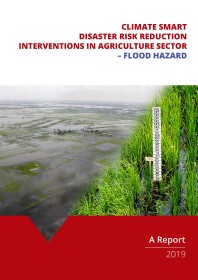- About Us
-
Who we are
-
- Publications
-
- ADPC Academy
-
MediaADPC'S NEWS
Towards a resilient Myanmar: integrating disaster and climate risk considerations in the development process Towards a resilient Myanmar: integrating disaster and climate risk considerations in the development process
30 Apr 2013
Nay Pi Daw, Myanmar
Amidst the vibrant pro-economic atmosphere in Myanmar in the past year, the country is emerging as an attractive investment and is quickly becoming a tourist, trade and service hub for the region. To cope with its new demands, Myanmar is gearing-up into development mode to establish a firm basis for the fast progress anticipated to take place in the near future.
Disaster and Climate Risk Management foster growth
As development takes off, challenges that impede growth, need to be looked into and pro-actively approached. In the past, damages caused by disasters resulted in a diversion of funds to response and recovery efforts, hampering development. With a stronger focus on disaster and climate risk management, development fund diversion is kept at a minimum and the country is more prepared to cope with the impact of disasters.
Disasters such as Cyclone Marla (2006), Cyclone Nargis (2008), Cyclone Giri (2010), Eastern Shan Earthquake (2011), Mandalay Earthquake (2012) and recurrent floods in expanded locations in the past several years demonstrate the extent in which development activities suffer considerable loss. As disaster trends are on the rise, inevitably so is loss.
The question at stake now is, “How can development gains be protected from adverse impacts of disaster and climate risk?’
Close links between disaster, climate risk and development a ‘must’
The close linkages between disaster, climate risk and development need attention and should not be overlooked. Development interventions are not ‘risk neutral’ as skewed development could create new risks or intensify the existing ones. Urban expansion could lead to dramatic change in land use patterns, while infrastructure could extensively alternate physical structure and landscape of the areas and development activities in risk prone areas (such as with floods and earthquakes).
How do we ensure development does not increase risk?
The Government of Myanmar plans to adopt risk-sensitive development interventions that would offer long-term solutions. Realizing the intricate relationship between disaster and climate risk and development, the Planning Department and the Ministry of National
Planning and Economic Development decided to resonate the interventions among planning related officers throughout the country for better-informed development and decision-making.Course tackles disaster and climate risk topics critical to sustainable developmentMinistry of National Planning and Economic Development, Myanmar conducts a regular training on development planning and implementation (at the officer level). The training encompasses a series of sessions covering topics ranging from planning processes, project appraisal, to regional planning and SWOT Analysis. It also includes topics on economic indicators, cost effective assessment, calculating national income and inflation. The training is organized in line with the annual planning cycle.
In order to strengthen the development planning from risk angle, a module on risk reduction titled 'Resilient Development planning in Myanmar: An overview' has been included into this training and a Handbook has been developed by Ministry of National Planning and Economic Development with technical support from ADPC. This handbook is available online at www.adpc.net.
The module orientates the training participants with multi-faceted linkages between disaster and climate risk and development. It also provides an overview of the benefits and approach of mainstreaming disaster and climate risk into development planning to enhance resilience and sustainable development.
In parallel with the module developed, the Planning Department and Relief and Resettlement Department with technical assistance by ADPC developed a 5-day national training course, ‘Mainstreaming Disaster and Climate Risk Management into Development Planning’. The course provides a comprehensive training that thoroughly discusses and explores broad ranges of mainstreaming disaster and climate risk management into development planning layers from national, to regional, and city-level planning.
Identifying action areas
Multi-disciplined in nature, mainstreaming disaster and climate risk will require extensive work and synergy from all concerned to step-up the agenda and incorporate it into development planning.
The module 'Resilient Development planning in Myanmar: An overview' will, for the time being, serve as building blocks to develop concrete actions in the near future. Relevant to the current development context, resilient development planning through the application of a disaster and climate-risk sensitive approach will make a difference.
Related PublicationsLatest NewsRelated Trainings
-
